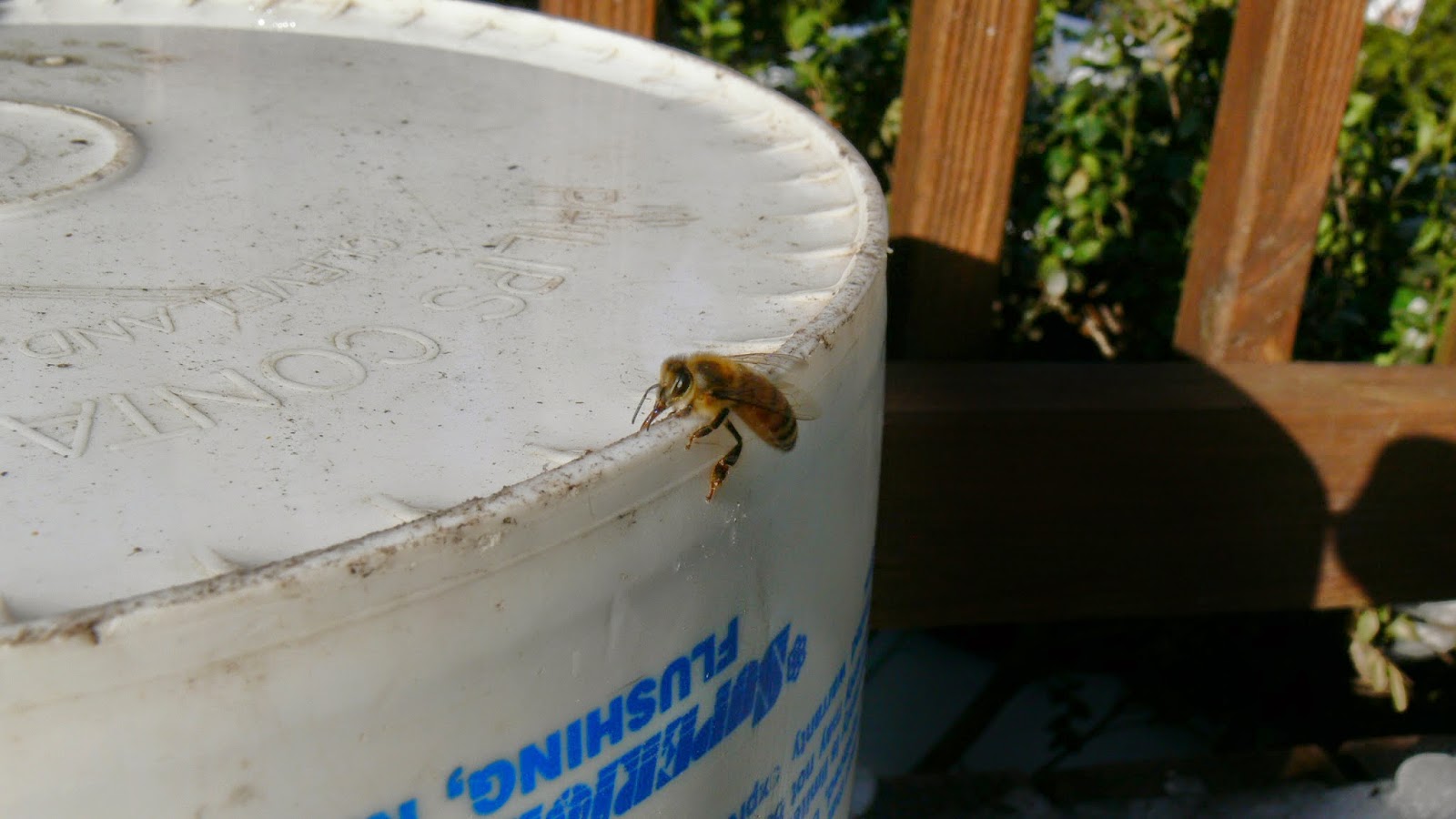A swarm of bees in May is worth a bale of hay
A swarm of bees in June is worth a silver spoon
A swarm of bees in July, just let them fly!
This is a rhyme that most beekeepers know. Apparently, it comes from the mid 17th century and puts a value on catching a swarm if you see one. If you can catch a swarm in May or June, you'll be able to have a harvest and keep the bees alive through the winter. If you find one in July, there isn't enough time or food to keep the hive going so you shouldn't bother collecting it.
As a kid, I often went with my Dad to collect swarms of bees when he got a call. I got to be his helper and hand him his tools or tell people to step away from the swarm. He was on the State Police call list and was pretty busy in May and June. He drove a yellow Volkswagen Beetle with a Mr. Bee license plate. He pulled a small trailer behind full of swarm catching stuff. I remember that he always had a deep super with a top and bottom, a white sheet, his smoker and some burlap, his hat and veil. Wherever there was a swarm there would be a crowd of people to watch and comment.
He was very calm and talkative while he figured out the best way to get the swarm without hurting the bees or any of the people around. He was really patient with the questions-
- Do they bite?
- Have you been bitten?
- Where is the honey?
- Are you going to kill them?
Catching a swarm was the way Dad increased the number of hives he had. We always had 10-12 hives in our back yard and he had hives at his parents' house and in several apple orchards around town. He did order bees in the Spring, but mostly he increased his have count by catching swarms.
One time, there was an article in the New York Times about him called "The Queen wore polish and laid eggs". The article profiled his appearance at the local public library where he brought an observation hive and all sorts of beekeeping tools and spoke to a group of people. The article quotes my sister who said she thought of the bees as pets. That's true! Dad would find drones and bring them to us to play with.
Dad was very protective of his bees. We had to save them if we found them floating in the pool and he'd get upset if we got stung, not because we got hurt but because a bee died! One sister tried to help the bees by putting some daisies into the hive. Nice thought but this did not turn out well for her. She got stung many times and had to go to the emergency room.
We even had bees living in our house between the outside and inside walls of my brothers' room. You could put your ear to the wall and hear them buzzing. You could see them coming and going from a small space at the roof line. Dad just left them there. He didn't want to remove the wall to take them out. I think he enjoyed having them living in the house along with his family.
My sister tells me she was with him one time when he retrieved a swarm from a golf course. The golfers were all standing around watching him and waiting to play through. One golfer asked him what enjoyment he got out of playing with stinging bugs. He responded that he got as much enjoyment as the golfer did chasing little white balls around.
My family has dozens of bee stories and bee memories. Funny how it took me so long to decide to follow in Dad's shoes but here I am. Maybe one day I'll drive a yellow VW Beetle with a small trailer on the back full of bee equipment.




























